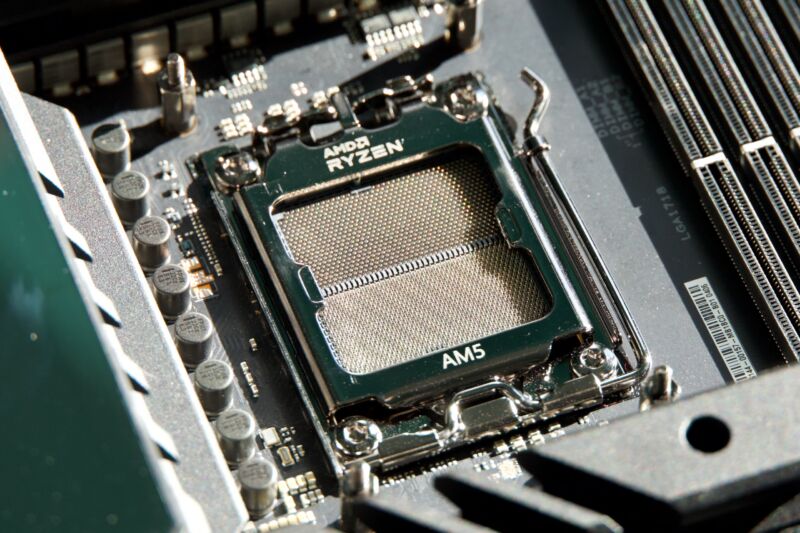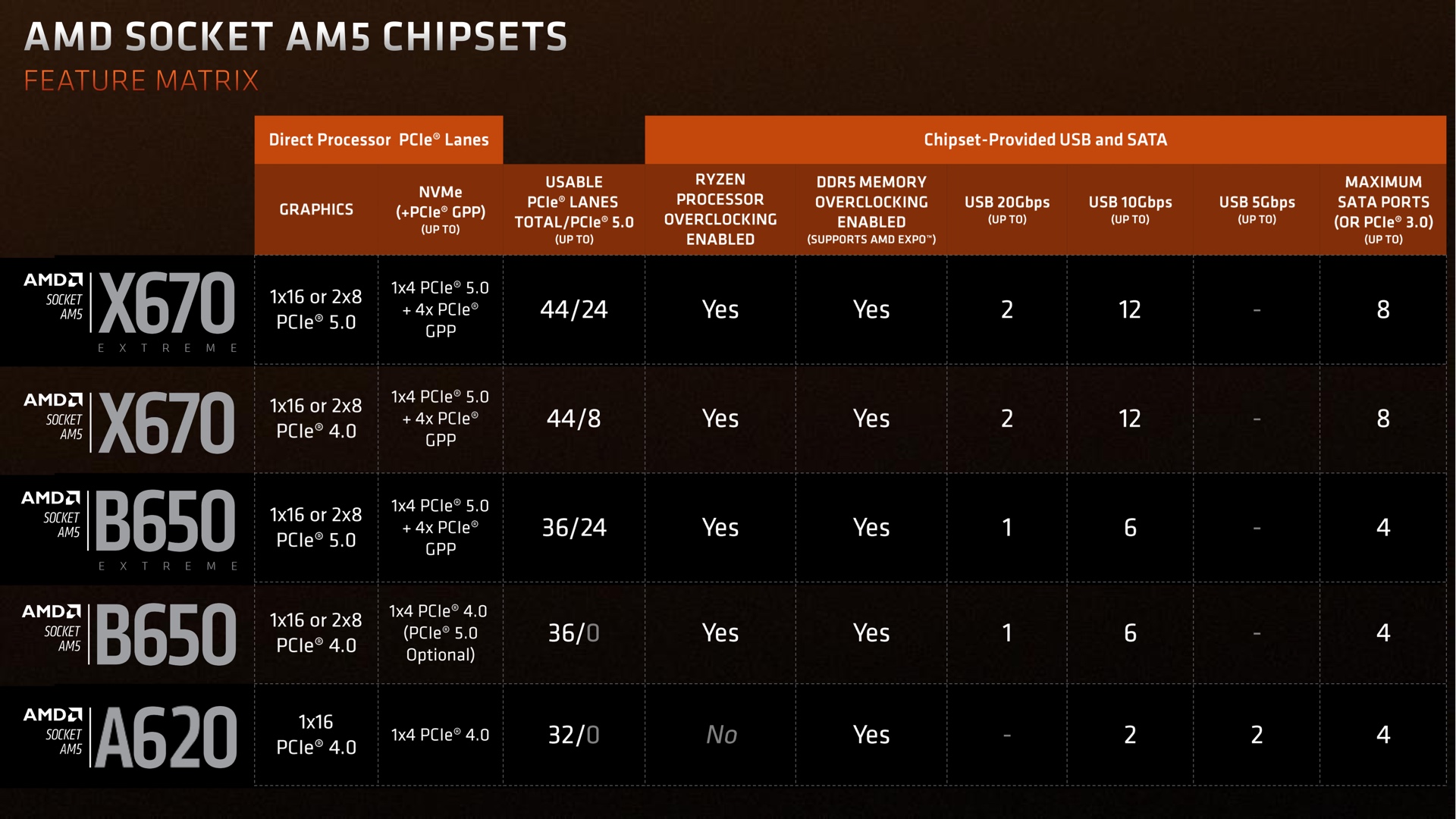
Enlarge / AMD's AM5 processor socket. (credit: Andrew Cunningham)
If you're trying to build a low-end to midrange gaming PC or workstation with inexpensive but modern parts, it's been hard to recommend AMD's Ryzen 7000-series processors. That's partly because Intel's CPUs have offered more cores for similar money, but motherboards with AMD's socket AM5 have remained stubbornly expensive, and their lack of support for DDR4 memory means you'll pay more to get DDR5 RAM.
That may change somewhat thanks to the new entry-level AMD A620 chipset, which the company quietly announced last week. AMD says they should bring the prices of AM5-based motherboards down to around $85, not far north of what low-end Intel-based H610 and B660 motherboards cost, though they'll still require DDR5 (for the DDR5-6000 that AMD recommends for optimal Ryzen performance, the price premium is still not quite double what you'll pay for the same amount of DDR4-3200).

How the A620 chipset stacks up to higher-end X670 and B650 options. Note the lack of CPU overclocking and PCIe 5.0 support. (credit: AMD)
Compared to X670 and B650-based motherboards, A620 chipsets will have more limited connectivity. There's no PCI Express 5.0 support at all for either graphics cards or SSDs—not a huge blow since no GPUs and few SSDs support PCIe 5.0 at this point anyway, but a step back for future-proofing. The processor will still provide enough PCIe 4.0 lanes for a GPU and a single SSD, but the chipset only supports PCIe 3.0 speeds for additional SSDs. The chipset also supports fewer USB ports overall and no 20Gbps USB ports.
Read 4 remaining paragraphs | Comments

Enlarge / AMD's AM5 processor socket. (credit: Andrew Cunningham)
If you're trying to build a low-end to midrange gaming PC or workstation with inexpensive but modern parts, it's been hard to recommend AMD's Ryzen 7000-series processors. That's partly because Intel's CPUs have offered more cores for similar money, but motherboards with AMD's socket AM5 have remained stubbornly expensive, and their lack of support for DDR4 memory means you'll pay more to get DDR5 RAM.
That may change somewhat thanks to the new entry-level AMD A620 chipset, which the company quietly announced last week. AMD says they should bring the prices of AM5-based motherboards down to around $85, not far north of what low-end Intel-based H610 and B660 motherboards cost, though they'll still require DDR5 (for the DDR5-6000 that AMD recommends for optimal Ryzen performance, the price premium is still not quite double what you'll pay for the same amount of DDR4-3200).

How the A620 chipset stacks up to higher-end X670 and B650 options. Note the lack of CPU overclocking and PCIe 5.0 support. (credit: AMD)
Compared to X670 and B650-based motherboards, A620 chipsets will have more limited connectivity. There's no PCI Express 5.0 support at all for either graphics cards or SSDs—not a huge blow since no GPUs and few SSDs support PCIe 5.0 at this point anyway, but a step back for future-proofing. The processor will still provide enough PCIe 4.0 lanes for a GPU and a single SSD, but the chipset only supports PCIe 3.0 speeds for additional SSDs. The chipset also supports fewer USB ports overall and no 20Gbps USB ports.
Read 4 remaining paragraphs | Comments
April 03, 2023 at 09:54PM

Post a Comment